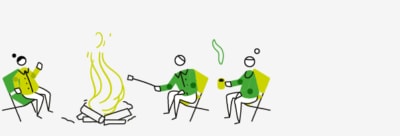3 min read
UK transport operators use tech to improve journeys
Story synopsis
- We helped two transport operators rethink customer journeys.
- Building a digital replica of a critical route enabled Network Rail to test timetables before putting trains on tracks.
- The ‘How do I catch a bus’ campaign has helped simplify journeys for Stagecoach customers.

Stories of our impact
Browse our best stories of how we’ve made a difference for our clients, people and society.
Read more stories
According to The Office for National Statistics, 3.7 million workers travel for two hours or more every weekday. While many of us rely on public transport, getting from A to B on buses and trains isn’t always an easy ride.
Here are two examples of how we got onboard with transport operators, using data science and advance analytics to rethink customer journeys.
On the right track
On 21 May 2018 'Meltdown Monday’ made national headlines as rail passengers were hit by an unprecedented number of cancellations and delays due to the introduction of a new timetable system.
This disruption prompted Network Rail to look for more ways to test timetables that schedule more than 22,000 trains carrying four million passengers a day across 19,000 miles of track.
We were asked to look for ways to improve customer journeys and performance on the UK railway, with a specific focus on the Transpennine Route, which links the north west and north east of England.
Using gaming simulation software, artificial intelligence (AI), machine learning, data integration and analytics, we built a digital replica of a critical section of the route. The virtual world mirrors signals, stations, trains and other infrastructure, providing a near real-world environment to test different scenarios. We also designed an interactive dashboard that visualises the simulation results.
“The digital replica harnesses technology and analytics to shape and improve the everyday commuting experience of people around the country,” explains project manager Bolly Williams, from the Deloitte Transport Analytics Team.
“We can test timetables before putting a single train on a track. This can potentially save millions of pounds worth of delay minutes or cancellations, and make a marked improvement on customer satisfaction metrics.”
“The project has the potential to revolutionise the entire rail industry. It brings structure and simplicity to what is complex and messy. And it shows how industry can work together to plan and make critical changes, with passengers front of mind.”
How do I catch a bus?
Bus companies are also facing significant challenges. Changing work, retail and travel habits are impacting traditional markets while technology-led start-ups are disrupting the industry. Operator Stagecoach needed to do something to maintain customer loyalty and increase passenger numbers.
In early 2018, it made a request to our Deloitte Digital team in Scotland: “We think it’s quite hard to catch a bus, can you go and catch one?”
Alongside representatives of Stagecoach, our team members took different journeys across the region to identify quick wins and remove barriers to travel.
Fact-finding, design and testing involved both the client and customers. As well as on-board observations, the team conducted interviews, diary studies, labs and workshops. In all, they looked at 128 ideas across three areas – culture, signage and service. The aim was to develop those that would deliver value the quickest.
Gareth Edwards from Deloitte Digital said “We focused on what was most obvious and what we could fix. It was very much about creating the right environment for people to feel comfortable travelling.”
A range of initiatives went live as part of the "How do I catch a bus?" campaign, including clearer signage at stops. Positive passenger tweets were displayed on information screens to boost driver morale and, in turn, customer service. The team also redesigned timetables with the help of Edinburgh University students, aware that printed versions are still a vital part of bus travel.
Now live in Dunfermline, Chichester and Banbury, they are clearly marked as experiments, with the public invited to tweet their thoughts. Early social media interaction has proved positive, and our work with Stagecoach received recognition at the 2018 UK Bus Awards.
Gareth added: “Of all the things we did together, remembering the customer was the most important. It was about really simple stuff that had been forgotten; things that helped people on their way.”


